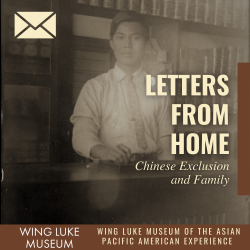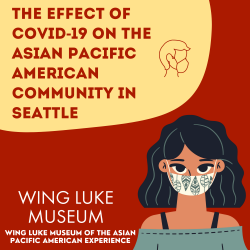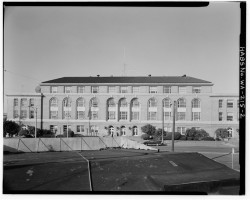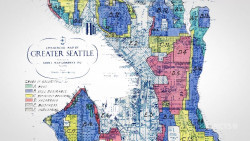Rahul Gupta
Preschool (0 to 4 years old), Primary (5 to 8 years old), Elementary (9 to 12 years old), Middle School (13 to 15 years old), High School (16 to 18 years old), Adults, Post-Secondary
Teacher/Educator, Education Agency Admin, Curriculum Coordinator, Curriculum Developer, Researcher, Museum Staff
Language Arts And English, Social Studies, Arts
Rahul Gupta's collections
Letters from Home: Chinese Exclusion & Family
<p dir="ltr">The following digital exhibit highlights the personal experiences of Chinese immigrants in Seattle, Washington during the early 20th century. These letter translations add the Wing Luke Museum's extensive archive of Chinese Exclusion era primary source letters into the canon of U.S. history. This lesson is designed to capture the visually-aesthetic, emotional, and era-specific conventions via letter-writing and correspondence. </p>
<p>The content within this exhibit includes historical background information and references in further developing students’ understanding of what Push factors and Pull factors are in immigration — specifically China and the United States. The exhibit will additionally take students through a visual storyline of important events and policies such as the Chinese Exclusion Act of 1882, the aftermath of migration, and the perspectives and real voices of Chinese immigrants behind such letters.</p>
<p></p>
<p>This Learning Lab collection was created by Emelynn Arroyave, David Salinas, and SovannKagna Hou in the summer 2021 Smithsonian Affiliate Digital Learning and Engagement Internship, in partnership with Emerson Collective and <em>Wing Luke Museum of the Asian Pacific American Experience, a Smithsonian Affiliate</em>. #SAintern #SAinterns #RaceAndSocialJustice #Immigration #ChangingAmericanNarrative </p>
 Rahul Gupta
Rahul Gupta
17
The Tale of Two Pandemics: COVID-19 & Racism in Seattle
<p>The effects of COVID-19 have dramatically shifted the ways in which we live our everyday lives. According to the New York Times, the coronavirus has infected “more than 186 million people worldwide [and] more than 4 million people have died so far.” The learning lab, The Tale of Two Pandemics, COVID-19 and Racism, will unravel not only the impact of COVID-19 within AAPI communities, but also the simultaneous systemic pandemic of racism on the Black and Brown community. Understanding the effects of the virus and pandemic on the Asian-American community is important as it acknowledges the collective hardships, narratives, and voices of individuals during this time period in history. The goal of this lab is to inform and educate others on the importance of historical events during today’s time and to showcase the strength and resilience of our marginalized communities in the United States. Furthermore, this lab highlights artwork created by different communities within Seattle's Chinatown-International District and the ways in which they symbolize and express identity and community healing. Pieces of artwork include murals titled "Chopsticks In A Bundle," "Higo," and "We Stand With Black Lives Matter." </p>
<p></p>
<p>This Learning Lab collection was created by Emelynn Arroyave, David Salinas, and SovannKagna Hou in the summer 2021 Smithsonian Affiliate Digital Learning and Engagement Internship, in partnership with Emerson Collective and <em>Wing Luke Museum of the Asian Pacific American Experience, a Smithsonian Affiliate</em>. #SAintern #SAinterns #RaceAndSocialJustice #CommunityHealth #Immigration #ChangingAmericanNarrative </p>
 Rahul Gupta
Rahul Gupta
14
U.S. Immigration and Naturalization Building
<p>The collection of photos here are about the U.S Immigration and Assay Office, more commonly known as the U.S. Immigration and Naturalization Building (INS), which had incarcerated and processed many immigrants and refugees seeking to live, or work in the US from 1932 to 2004. It actively participated in detaining numerous immigrants from various ethnic groups, such as Asian Pacific Islanders and people from Southeast Asia, but had targeted Chinese immigrants, particularly men, because of the Chinese Exclusion Act, which restricted the entry of laborers to the United States. </p>
<p>In 2004, it would be shut down. Later, it was purchased by private investors, who rebuilt and renamed it Inscape, a studio space for Seattle artists in the area.<br></p>
<p>Immigration has been a topic of discussion for years, with easily accessible internet access and social media access has led the public to think about-----</p>
<p>‘What is the American Dream? Who gets to make that dream a reality and who gets denied that access? What is happening today around immigration and detention and what actionable items can we organize?‘</p>
 Rahul Gupta
Rahul Gupta
14





